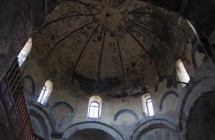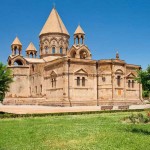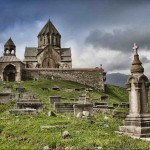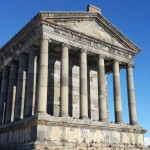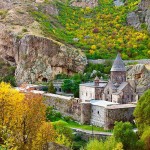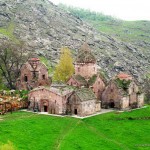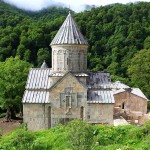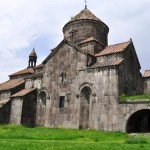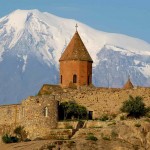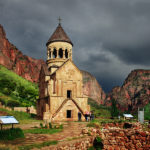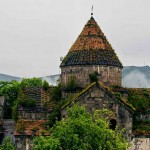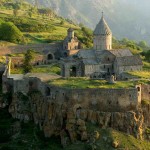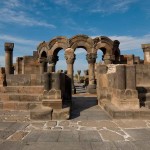
Mastara church
Comment are off
The church of St. Hovhannes also called Mastara Church is located in Mastara village, Armenia. According to the historical sources relics of St. John the Baptist brought by Grigor the Illuminator (Lusavorich) from Caesarea, are buried here. That’s why the village is called Mastara (“mas” is translated from Armenian as “relics”). According to the inscriptions preserved on the south and eastern walls of the church it was built in VII century by priest Grigor under the Bishop Teodoros Gnuni. However, judging by architecture of the church it was built earlier, in the V century, and in VII it was only reconstructed. Traces of reconstruction are found in the interior of the church, and it’s a forcible argument in favor of this version. Discrepancy in dates is probably caused by incorrect interpretation of the Armenian word “shinel” which can be translated both as “build” and “reconstruct”. Mastara Church was reconstructed several times. In 891 its southern entry was overhauled by Sargis, son of the priest Artavazd. In XVIII century a wall was erected around the church and it served as a fortress for a long time. In 1889 the wall was demolished by local priest’s order who also initiated reconstruction works in the church. The architectural concept of cruciform central-plan domed church of St. Hovhannes in Mastara illustrates the transitional period when simple church compositions were replaced by more complex structures. The church is crowned by an imposing dome having 11.2 diameter supported by 4 large apses. According to the tradition of medieval architecture the walls of the church are deprived of any decorations.


